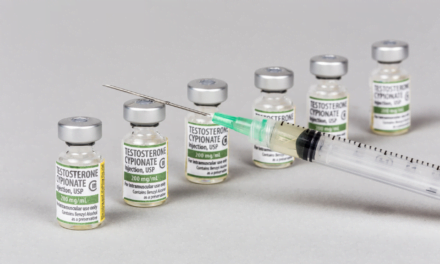Anabolic steroids are synthetic substances that mimic the effects of testosterone in the body, resulting in increased muscle mass and strength. While they have some legitimate medical uses, anabolic steroids are commonly abused by athletes and bodybuilders to enhance their performance and physique. Unfortunately, this abuse can have serious negative effects on the body and lead to addiction. This article will explore the role of public policy and education in addressing anabolic steroid abuse in the United States.
The role of public policy in addressing anabolic steroid abuse:
Public policy plays a significant role in addressing anabolic steroid abuse. The Controlled Substances Act (CSA) is a federal law that regulates the manufacture, distribution, and possession of controlled substances, including anabolic steroids. In 1990, the Anabolic Steroid Control Act was passed as an amendment to the CSA, making it illegal to possess or distribute anabolic steroids for non-medical purposes.
Violating anabolic steroid laws can result in criminal penalties such as fines and imprisonment, as well as civil penalties like asset forfeiture. The effectiveness of these policies in reducing anabolic steroid abuse is somewhat mixed. While they have likely had some impact on the availability of anabolic steroids, they have not completely eliminated the problem.
The role of public policy in addressing anabolic steroid abuse in the UK:
Public policy plays a crucial role in addressing anabolic steroid abuse in the United Kingdom. Similar to the United States, the UK has laws and regulations in place to control the manufacture, distribution, and possession of controlled substances, including anabolic steroids. The Misuse of Drugs Act 1971 classifies anabolic steroids as Class C drugs, making it illegal to possess or supply them without a prescription.
Violating anabolic steroid laws in the UK can lead to criminal charges, including fines and imprisonment. The enforcement of these policies aims to reduce the availability of anabolic steroids for non-medical purposes. However, despite these efforts, the problem of anabolic steroid abuse persists, highlighting the need for comprehensive measures.
The role of education in addressing anabolic steroid abuse:
Education is another crucial factor in addressing anabolic steroid abuse. Understanding the effects of anabolic steroids on the body is essential to making informed decisions about their use. Short-term effects can include acne, hair loss, and increased aggression, while long-term effects can include liver damage, heart disease, and infertility.
Education can also help individuals understand the risks and consequences of anabolic steroid abuse. Physical risks include the negative health effects mentioned above, while legal risks include fines and imprisonment for violating anabolic steroid laws. Additionally, anabolic steroid abuse can have social and psychological consequences such as relationship problems, mood swings, and decreased self-esteem.
The potential for success through a combined approach:
While both public policy and education have a role to play in addressing anabolic steroid abuse, a combined approach is likely to be most effective. Public education campaigns, school-based prevention programs, and collaborative efforts between law enforcement and education have all been successful in reducing drug abuse in general.
In terms of anabolic steroid abuse, these strategies could include providing information about the dangers of anabolic steroids in schools, working with healthcare providers to identify and treat steroid addiction, and increasing the availability of resources for those struggling with addiction.
Conclusion:
Anabolic steroid abuse is a serious problem in the United States, and addressing it requires a multifaceted approach. Public policy and education both play critical roles in reducing the abuse of anabolic steroids. While current policies have had some success, there is still much work to be done. A combined approach that includes public education campaigns, school-based prevention programs, and collaborative efforts between law enforcement and education could be the key to successfully reducing anabolic steroid abuse in the future.
FAQ
Q: What are anabolic steroids, and why are they abused?
Anabolic steroids are synthetic substances that mimic the effects of testosterone in the body, resulting in increased muscle mass and strength. They are commonly abused by athletes and bodybuilders to enhance their performance and physique.
Q: What is the role of public policy in addressing anabolic steroid abuse?
Public policy plays a significant role in addressing anabolic steroid abuse. The Controlled Substances Act (CSA) is a federal law that regulates the manufacture, distribution, and possession of controlled substances, including anabolic steroids. In 1990, the Anabolic Steroid Control Act was passed as an amendment to the CSA, making it illegal to possess or distribute anabolic steroids for non-medical purposes.
Q: What are the consequences of violating anabolic steroid laws?
Violating anabolic steroid laws can result in criminal penalties such as fines and imprisonment, as well as civil penalties like asset forfeiture.
Q: What is the role of education in addressing anabolic steroid abuse?
Education is another crucial factor in addressing anabolic steroid abuse. Understanding the effects of anabolic steroids on the body is essential to making informed decisions about their use. Education can also help individuals understand the risks and consequences of anabolic steroid abuse.
Q: What are the short-term and long-term effects of anabolic steroid abuse?
Short-term effects can include acne, hair loss, and increased aggression, while long-term effects can include liver damage, heart disease, and infertility.
Q: How can a combined approach of public policy and education address anabolic steroid abuse?
A combined approach that includes public education campaigns, school-based prevention programs, and collaborative efforts between law enforcement and education could be the key to successfully reducing anabolic steroid abuse in the future.
Q: What are some successful examples of a combined approach in addressing drug abuse in general?
Successful examples include providing information about drug dangers in schools, working with healthcare providers to identify and treat addiction, and increasing the availability of resources for those struggling with addiction.
Q: What is the outlook for addressing anabolic steroid abuse in the future?
While current policies have had some success, there is still much work to be done. A combined approach of public policy and education is likely to be the most effective strategy for reducing anabolic steroid abuse in the future.
Author

Dr. Aditya K. Sharma
I am Dr. Aditya Sharma, a dedicated urologist specializing in kidney transplants and advanced urological surgeries. My career is driven by a passion for delivering exceptional care and pioneering surgical techniques. Outside the operating room, I have a keen interest in studying the effects of anabolic steroids on bodybuilding, seeking to understand the fine line between enhancing performance and maintaining health.








